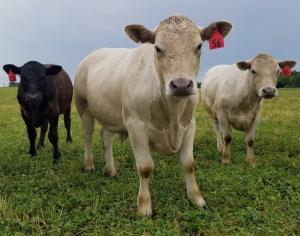NRCS Great Lakes Restoration Initiative (GLRI) Priority Watersheds Maps
On this page find general and detailed maps of USDA NRCS Great Lakes Restoration Initiative (GLRI) Priority Watersheds.

Since 2010, the Great Lakes Restoration Initiative (GLRI) has served as a catalyst for unprecedented federal agency coordination to protect and restore the largest system of fresh surface water in the world.
NRCS, along with 11 other Federal agencies, are supporting and participating in the Great Lakes Restoration Initiative (GLRI). The Great Lakes Restoration Initiative is the largest investment in the Great Lakes in two decades. A task force of 11 federal agencies developed an action plan to implement the initiative. The action plan addresses urgent issues such as cleaning up Great Lakes Areas of Concern, preventing and controlling invasive species, reducing nutrient runoff that contributes to harmful or nuisance algal blooms, and restoring habitat to protect native species.
NRCS is helping landowners and land users to plan and implement activities to improve and protect the natural resources in locally identified watersheds within the eight GLRI states: Illinois, Indiana, Michigan, Minnesota, New York, Ohio, Pennsylvania, and Wisconsin.
Through GLRI, NRCS offers financial assistance to agricultural producers for implementing practices that improve water quality in selected watersheds. Financial assistance will come through the Environmental Quality Incentives Program (EQIP) and will focus on reducing nutrient and sediment delivery to surface water as well as controlling invasive species and improving wildlife habitat.
The program provides payments to help implement designated conservation activities. Specified EQIP practices will be eligible for funding through GLRI. Socially disadvantaged farmers, limited resource farmers, and beginning farmers may qualify for higher program payments.

NRCS Demonstration Farm Networks showcase the best, leading-edge conservation practices to reduce phosphorus and sediment from entering watersheds vital to our nation's drinking water supply.

Adam Dowling - Acting Water Quality Initiatives Coordinator
adam.dowling@usda.gov
(608) 577-3782
The Environmental Quality Incentives Program (EQIP) provides financial and technical assistance to agricultural producers and non-industrial forest managers to address natural resource concerns.
Learn MoreContact your local service center to start your application.
Do you farm or ranch and want to make improvements to the land that you own or lease?
Natural Resources Conservation Service offers technical and financial assistance to help farmers, ranchers and forest landowners.

To get started with NRCS, we recommend you stop by your local NRCS field office. We’ll discuss your vision for your land.
NRCS provides landowners with free technical assistance, or advice, for their land. Common technical assistance includes: resource assessment, practice design and resource monitoring. Your conservation planner will help you determine if financial assistance is right for you.
We’ll walk you through the application process. To get started on applying for financial assistance, we’ll work with you:
Once complete, we’ll work with you on the application, or CPA 1200.
Applications for most programs are accepted on a continuous basis, but they’re considered for funding in different ranking periods. Be sure to ask your local NRCS district conservationist about the deadline for the ranking period to ensure you turn in your application in time.
As part of the application process, we’ll check to see if you are eligible. To do this, you’ll need to bring:
If you don’t have a farm number, you can get one from USDA’s Farm Service Agency. Typically, the local FSA office is located in the same building as the local NRCS office. You only need a farm number if you’re interested in financial assistance.
NRCS will take a look at the applications and rank them according to local resource concerns, the amount of conservation benefits the work will provide and the needs of applicants. View Application Ranking Dates by State.
If you’re selected, you can choose whether to sign the contract for the work to be done.
Once you sign the contract, you’ll be provided standards and specifications for completing the practice or practices, and then you will have a specified amount of time to implement. Once the work is implemented and inspected, you’ll be paid the rate of compensation for the work if it meets NRCS standards and specifications.